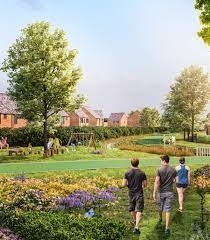Introduction
The field of urban and regional planning is continuously evolving, with new practices and implementation strategies emerging to address the complex challenges of modern cities and regions. As we progress further into the 21st century, planners are increasingly focusing on sustainability, resilience, and inclusivity.

This article explores the latest updates in planning practice and implementation, highlighting innovative approaches and technologies that are shaping the future of urban development.
Integrated and Comprehensive Planning
One of the most significant shifts in planning practice is the move towards integrated and comprehensive planning approaches. This involves the coordination of various planning aspects—land use, transportation, housing, and environmental sustainability—into a unified strategy.
Recent updates emphasize the importance of cross-sector collaboration, where planners work closely with stakeholders, including government agencies, private sector partners, and community groups, to ensure that plans are holistic and address multiple objectives simultaneously.
Digital Twins and Smart City Technologies
Digital twins, virtual replicas of physical assets, systems, or processes, have become a game-changer in planning practice. By using real-time data and simulations, digital twins enable planners to model and analyze urban environments with high accuracy.
This technology supports better decision-making by predicting the impact of different scenarios and interventions. Coupled with smart city technologies, such as the Internet of Things (IoT), sensors, and data analytics, digital twins help in optimizing urban operations, enhancing infrastructure management, and improving service delivery.
Resilience and Climate Adaptation
In response to increasing climate risks, planners are prioritizing resilience and climate adaptation in their strategies. The latest practices incorporate climate risk assessments and resilient design principles into planning processes. This includes the development of green infrastructure, such as parks and wetlands, which can mitigate flood risks and reduce urban heat islands.
Additionally, planners are implementing adaptive management frameworks that allow for flexible responses to changing environmental conditions, ensuring that urban areas can withstand and recover from climate-related events.
Participatory and Inclusive Planning
Community engagement and participatory planning have become central to modern planning practice. The latest updates emphasize the use of digital tools and platforms to facilitate broader and more inclusive participation. Virtual reality (VR) and augmented reality (AR) technologies are being used to create immersive experiences that help residents visualize proposed developments and provide feedback. Social media and online surveys also play a crucial role in reaching diverse populations and ensuring that planning processes are transparent and responsive to community needs.
Sustainable Development Goals (SDGs) Alignment
Aligning planning practices with the United Nations Sustainable Development Goals (SDGs) has become a priority for many cities and regions. Planners are integrating SDG targets into their frameworks, focusing on sustainable land use, affordable housing, clean energy, and inclusive communities. This alignment ensures that local planning efforts contribute to global sustainability objectives, promoting equitable and environmentally responsible urban development.
Data-Driven and Evidence-Based Planning
The availability of big data and advanced analytics has revolutionized planning practice. Planners now have access to vast datasets from various sources, including satellite imagery, social media, and IoT devices. The latest updates in data-driven planning involve the use of machine learning algorithms and predictive analytics to identify trends, forecast future needs, and optimize resource allocation. This evidence-based approach enhances the accuracy and effectiveness of planning decisions, leading to better outcomes for urban communities.
Public-Private Partnerships (PPPs)
Public-private partnerships (PPPs) are increasingly being used as a mechanism to implement large-scale urban development projects. These partnerships leverage the strengths of both sectors, combining public oversight with private sector efficiency and innovation. Recent updates highlight the importance of transparent and equitable PPP arrangements that ensure public benefits and protect community interests. Successful PPPs have been instrumental in delivering critical infrastructure, affordable housing, and urban regeneration projects.
Green and Blue Infrastructure
Incorporating green (vegetation-based) and blue (water-based) infrastructure into urban planning is a growing trend aimed at enhancing environmental sustainability and improving quality of life. Green roofs, urban forests, and greenways contribute to biodiversity, reduce urban heat islands, and improve air quality. Blue infrastructure, such as rivers, lakes, and coastal areas, provides recreational opportunities and helps manage stormwater. The latest practices emphasize the integration of these natural elements into urban landscapes to create healthier and more resilient cities.
Conclusion
Planning practice and implementation are undergoing significant transformations driven by technological advancements, climate challenges, and the need for greater inclusivity. The integration of digital twins, smart city technologies, and data-driven approaches is enhancing the precision and effectiveness of planning decisions. Meanwhile, a focus on resilience, community engagement, and sustainable development ensures that urban areas are prepared for future challenges and aligned with global sustainability goals. As these practices continue to evolve, planners must stay informed about the latest trends and innovations to create vibrant, resilient, and inclusive urban environments.



